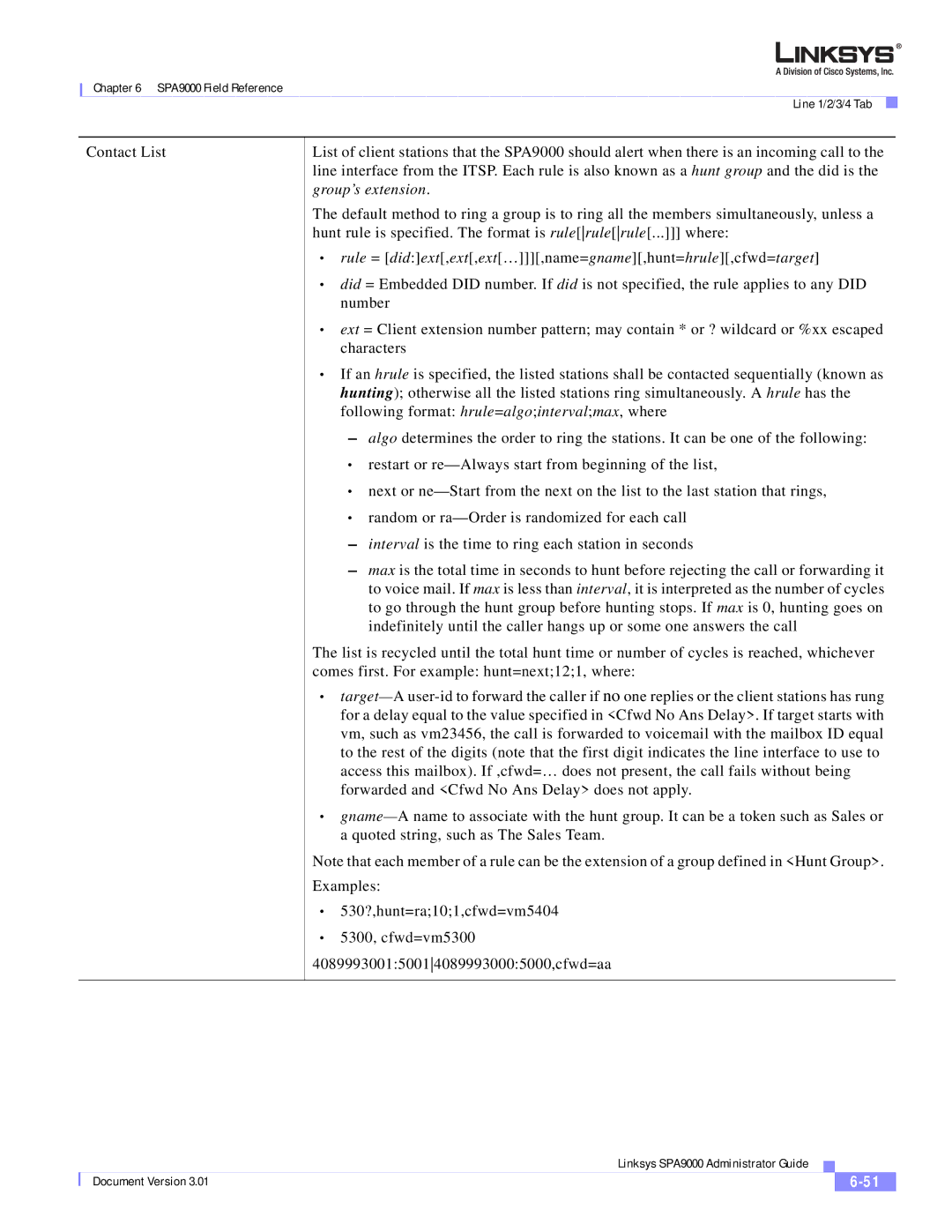
Chapter 6 SPA9000 Field Reference
Line 1/2/3/4 Tab
Contact List
List of client stations that the SPA9000 should alert when there is an incoming call to the line interface from the ITSP. Each rule is also known as a hunt group and the did is the group’s extension.
The default method to ring a group is to ring all the members simultaneously, unless a hunt rule is specified. The format is rule[rule[rule[...]]] where:
•rule = [did:]ext[,ext[,ext[…]]][,name=gname][,hunt=hrule][,cfwd=target]
•did = Embedded DID number. If did is not specified, the rule applies to any DID number
•ext = Client extension number pattern; may contain * or ? wildcard or %xx escaped characters
•If an hrule is specified, the listed stations shall be contacted sequentially (known as hunting); otherwise all the listed stations ring simultaneously. A hrule has the following format: hrule=algo;interval;max, where
–algo determines the order to ring the stations. It can be one of the following:
•restart or
•next or
•random or
–interval is the time to ring each station in seconds
–max is the total time in seconds to hunt before rejecting the call or forwarding it to voice mail. If max is less than interval, it is interpreted as the number of cycles to go through the hunt group before hunting stops. If max is 0, hunting goes on indefinitely until the caller hangs up or some one answers the call
The list is recycled until the total hunt time or number of cycles is reached, whichever comes first. For example: hunt=next;12;1, where:
•
•
Note that each member of a rule can be the extension of a group defined in <Hunt Group>. Examples:
•530?,hunt=ra;10;1,cfwd=vm5404
•5300, cfwd=vm5300 4089993001:50014089993000:5000,cfwd=aa
|
| Linksys SPA9000 Administrator Guide |
|
| |
|
|
| |||
| Document Version 3.01 |
|
|
| |
|
|
|
| ||
